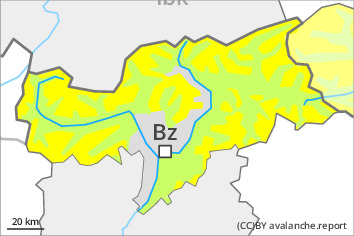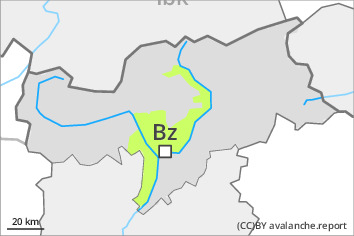
Danger level
 | 2200m |
|  |
|  |

Wind slabs are in some cases prone to triggering.
More recent wind slabs can be released by a single winter sport participant in some cases above approximately 2200 m. The avalanche prone locations are to be found in particular adjacent to ridgelines and in pass areas and in gullies and bowls. At elevated altitudes the likelihood of avalanches being released is greater. The wind slabs are clearly recognisable to the trained eye. They are to be avoided as far as possible. Mostly avalanches are only small. Even a small avalanche can sweep winter sport participants along and give rise to falls.
In addition very occasional gliding avalanches are possible, in particular on steep east, south and west facing slopes below approximately 2600 m, in particular in the regions with a lot of snow. Areas with glide cracks are to be avoided.
Snowpack
dp.6: cold, loose snow and wind
The wind slabs are bonding only slowly with the old snowpack. They remain in some cases prone to triggering.
Towards its base, the snowpack consists of faceted crystals. This is particularly the case in the areas with less snow, well off the main Alpine ridge. The snowpack will be subject to considerable local variations above the tree line.
Low and intermediate altitudes: Towards its base, the snowpack is moist and its surface consists of loosely bonded snow lying on a crust that is strong in many cases.
Tendency
The wind slabs remain in some cases prone to triggering especially on very steep shady slopes.


